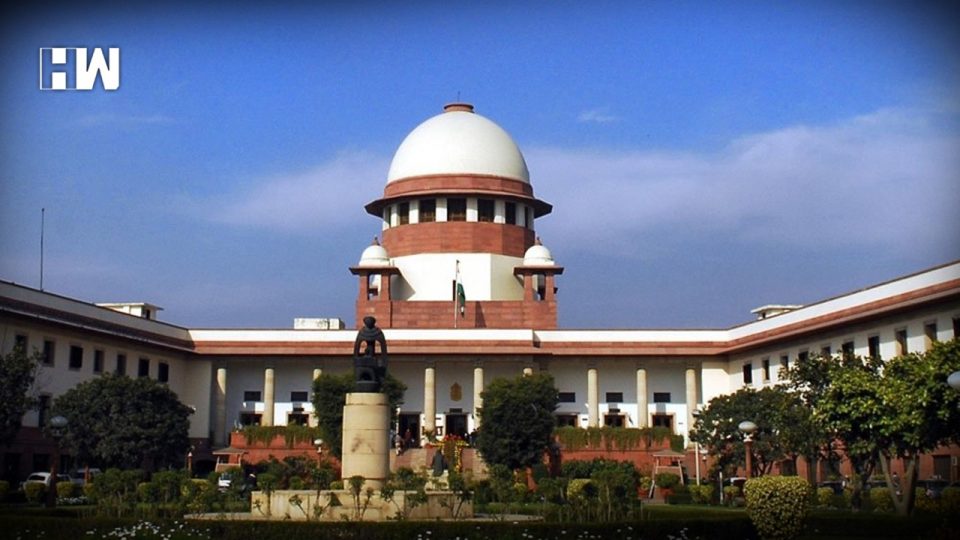The main aim of this move is to clear the big backlog courts have been facing. Citing data from the National Judicial Data Grid, the court said five high courts Allahabad, Punjab & Haryana, Madras, Bombay, and Rajasthan are responsible for 54% of the pendency of over 57,51,312 cases.
In the last couple of days, the Supreme Court gave orders in two separate yet intertwined cases. In the first order, the Court expressed grave concern over the delay in the recommendations, background checks, and final appointment of High Court judges. To tackle this delay, a three-judge bench led by Chief Justice S.A. Bobde ruled that the central government should forward the recommendations to the SC collegium within eight to 12 weeks of receiving the names from the high court and IB and advised them to follow the above timeline.

The bench in its order said “The High Courts are in a crisis situation. There are almost 40% vacancies in the High Courts, with many of the larger High Courts working under 50% of their sanctioned strength,”
In its second order, the SC paved the way for the appointment of ad-hoc judges (maximum five in each High Court) in order to address the long-pending problem of a heavy backlog of cases in the judiciary.
What are the provisions and rules for the ad-hoc judges? How severe is the problem of backlog? What does it mean for the judiciary going forward? Let’s find out
Dormant Provision Brought To Life
The Supreme Court, under Article 224A of the Constitution, decided to give a go-ahead to the appointment of ad-hoc judges. This article was there in the original Constitution in 1949, but was detailed in 1956 and then re-introduced in 1963.
The article states:-
“If by reason of any temporary increase in the business of High Court or by reason of arrears of work therein, it appears to the President that the number of the Judges of that Court should be for the time being increased, the President may appoint duly qualified persons to be Additional Judges of the Court for such period not exceeding two years as he may specify”
Interestingly enough, in the last six decades, only three retired judges have been appointed as ad hoc judges for a period of one year each. They are Justice Suraj Bhan to the Madhya Pradesh HC in 1972, Justice P Venugopal to Madras High Court in 1982, and Justice O P Srivastava to the Allahabad HC in 2007.
According to the rules laid down by the SC, the process to appoint retired ad-hoc judges can be initiated if
1) vacancies are more than 20% of the sanctioned strength of the high court
2) cases in a particular category are pending for over five years.
3) more than 10 percent of pending cases are over five years old,
4) percentage of the rate of disposal is lower than the institution of the cases either in a particular subject matter or generally in the court.
Functions Of Ad-Hoc Judges
As for their functions, The ad hoc judges are absolved from administrative responsibilities. They can concentrate on old cases which are stuck on the system and may require greater experience.
Also Read: Delhi HC Issues Contempt Notice To Inox Amid O2 Crisis
The Supreme Court clarified that the ad-hoc judges can’t be a substitute for permanent judges and that the vacancies need to be filled at the earliest. In fact, the Supreme Court itself is facing a problem with vacancies. In what could be a blot on CJI Bobde’s tenure, all the meetings during his tenure of the collegium ended in a deadlock, not a single recommendation was given for elevating judges to the Supreme Court
Clearing Backlog
The main aim of this move is to clear the big backlog courts have been facing. Citing data from the National Judicial Data Grid, the court said five high courts Allahabad, Punjab & Haryana, Madras, Bombay, and Rajasthan are responsible for 54% of the pendency of over 57,51,312 cases.

Functioning virtually which brought its own set of challenges has only aided this problem further. Litigants would surely be hoping that the appointment of ad-hoc judges and the setting of a timeline for the judges act as the perfect catalyst to seek justice in a speedy manner.
As an independent media platform, we do not take advertisements from governments and corporate houses. It is you, our readers, who have supported us on our journey to do honest and unbiased journalism. Please contribute, so that we can continue to do the same in future.

